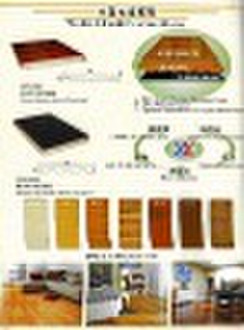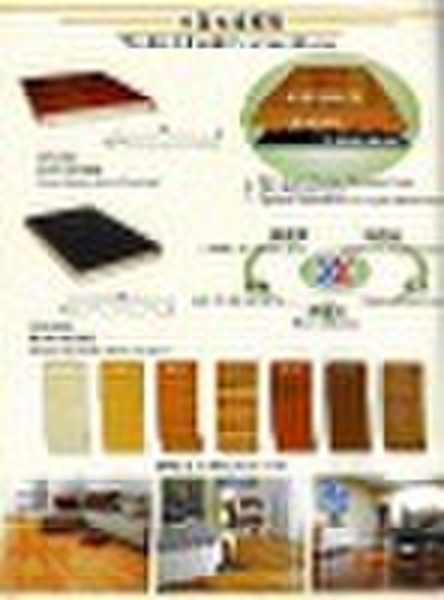Catalog
-
Catalog
- Agriculture
- Apparel
- Automobiles & Motorcycles
- Beauty & Personal Care
- Business Services
- Chemicals
- Construction & Real Estate
- Consumer Electronics
- Electrical Equipment & Supplies
- Electronic Components & Supplies
- Energy
- Environment
- Excess Inventory
- Fashion Accessories
- Food & Beverage
- Furniture
- Gifts & Crafts
- Hardware
- Health & Medical
- Home & Garden
- Home Appliances
- Lights & Lighting
- Luggage, Bags & Cases
- Machinery, Hardware & Tools
- Measurement & Analysis Instruments
- Mechanical Parts & Fabrication Services
- Minerals & Metallurgy
- Office & School Supplies
- Packaging & Printing
- Rubber & Plastics
- Security & Protection
- Service Equipment
- Shoes & Accessories
- Sports & Entertainment
- Telecommunications
- Textiles & Leather Products
- Timepieces, Jewelry, Eyewear
- Tools
- Toys & Hobbies
- Transportation
Filters
Search
Wooden & Plastic Floorboard Series
original price: 10,00 USD
Chengdu, China
Production capacity:
10000 Meter / Day

Gong Kent
Contact person
Basic Information
Wooden & Plastic Floorboard SeriesClip-on Wooden Plastic Floorboard Feature: A. high density abrasion resistance layer B. ultra waterproof layer C. equalized stable shock absorption bottom layer WPC(Wood-plastic composite) is a composite material lumber or timber madeof recycled or new plastic and wood wastes or other fibers. Its mostwidespread use is in outdoor decking, but it is also used for railings,fencings, landscaping timbers, park benches, window and door frames,and indoor furniture.Wood-plastic composite is moreenvironmentally friendly and requires less maintenance than thealternatives of solid wood treated with preservations or solid wood ofrot-resistant species. Resistant to cracking and splitting, thesematerials can be moulded with or without simulated wood grain details.Even with the wood grain design these materials are still visually easyto distinguish from natural timber as the grains are the same uniformcolor as the rest of the material.Wood-plastic composite isstill a very new material relative to the long history of naturallumber as a building material but can be substituted in most instances.Besides being highly resistant to rot, the major advantage of thiscategory of building materials is its ability to add another stage ofupstream use to materials previously considered waste lumber. Althoughthese materials continue the lifespan of used and discarded materials,and have their own considerable half life; the polymers and adhesivesadded make wood-plastic composite difficult to recycle again after usedue to the many impurities in such a compound.Wood-plasticcomposite lumber is composed of wood fibers from recovered saw dust(and other cellulose-based fiber fillers such as peanut hulls, bamboo,straw, etc.) and waste plastics including PP/PE and PVC. The powder ismixed and plasticized and then extruded to the desired shape. Additivessuch as colorants, coupling agents, stabilizers, blowing agents,reinforcing agents, foaming agents, lubricants help tailor the endproduct to the target area of application. The material is formed intoboth solid and hollow profiles. With the diversity of organiccomponents used in wood/plastic composite processing, there is nosingle answer to reliably handling these potentially difficultmaterials.Dried wood waste, resin, regrinds, and most of theadditives are combined and processed in WPC granulators. And then WPCpellets shall be extruded or injected in an extruder. A majoradvantage over wood is the ability of the material to be moulded tomeet almost any desired special conditions. It can also be bent andfixed to form strong arcing curves. With up to 70 percent cellulosecontent (although 60/40 is more common); wood-plastic composites behavelike wood and can be shaped using conventional woodworking tools. Atthe same time, they are moisture-resistant and resistant to rot,although they are not as rigid as wood and may slightly deform inextremely hot weather. The material is also sensitive to staining froma variety of agents by virtue of its porosity. WPC profiles are in noneed of painting as they are manufactured in a variety of colors.
Delivery terms and packaging
Packaging Detail: Plastic film or wooden boxes package Delivery Detail: 30-45 days
Port: ShangHai
Payment term
Letter of credit
Telegraphic transfer
-
Payment Methods
We accept:









